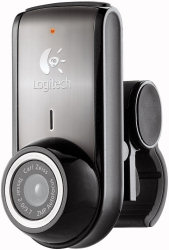

- Quickcam for notebooks pro fix drivers#
- Quickcam for notebooks pro fix driver#
- Quickcam for notebooks pro fix archive#
Most major device manufacturers update their drivers regularly. To find the newest driver, you may need to visit the Logitech website. It is a software utility which automatically finds and downloads the right driver.
Quickcam for notebooks pro fix driver#
Tech Tip: If you are having trouble deciding which is the right driver, try the Logitech Driver Update Utility. In the results, choose the best match for your PC and operating system. Enter Logitech QuickCam for Notebooks Pro into the search box above and then submit.
Quickcam for notebooks pro fix archive#
If the driver listed is not the right version or operating system, search our driver archive for the correct version. After you complete your download, move on to Step 2. To get the QuickCam for Notebooks Pro driver, click the green download button above. Reset the pan/tilt motors to their original position for camera models that support mechanical pan/tilt.īoth bits can be set at the same time to reset both, pan and tilt, at the same time.How to Update QuickCam for Notebooks Pro Device Drivers Quickly & Easily Step 1 - Download Your Driver The unit of the pan/tilt values is 1/64th of a degree and the resolution is 1 degree. There are no physical units, instead, the focus range is spread over 256 logical units with 0 representing infinity focus and 255 being macro focus.Īllows the control of pan/tilt motor movements for camera models that support mechanical pan/tilt.īits 0 to 15 control pan, bits 16 to 31 control tilt. | Frequency value 20f | Blink frequency f | Blink interval T |Īllows the control of focus motor movements for camera models that support mechanical focus.īits 0 to 7 allow selection of the desired lens position. The following table illustrates the relation between the LED frequency value used in bits 16 to 23, the physical blink frequency, and the physical blink interval. The blink interval T = 1/f is defined as the time between two adjoining rising edges (or two adjoining falling edges). It is expressed in units of 0.05 Hz and sets the blink frequency f.

The frequency value only influences the 'Blinking' mode.

Typically this means that means that is is illuminated when streaming video and off when not streaming video.īits 16 to 23 represent the LED frequency. The LED blinks, whether or not the device is streaming video. The LED is always illuminated, whether or not the device is streaming video. The LED is never illuminated, whether or not the device is streaming video. This value is only relevant if XU_COLOR_PROCESSING_DISABLE is set to 0.Īllows control over the state of the first LED.Ĭurrently, the following modes are available: Specify the number of bits per pixel for raw data. Added a control to change the LED mode.Įnable or disable the color processing pipeline within the camera. Added the pan/tilt reset control for the QuickCam Orbit/Sphere series. Added focus motor control for cameras that support it (QuickCam Pro 9000, QuickCam Pro for Notebooks, QuickCam Orbit/Sphere AF). Fixed the bitmap indices which were off by one. Added the two controls required for enabling Bayer mode (Disable video processing and Raw bits per pixel). Added a control to change the LED blink frequency. Support for two new controls defined by V4L2 starting from 2.6.26:V4L2_CID_PAN_RESET ('Pan Reset') and V4L2_CID_TILT_RESET ('Tilt reset'). Updated the values of V4L2_CID_PAN_RELATIVE and V4L2_CID_PAN_RELATIVE to work with the latest UVC driver (those values will be part of kernels >= 2.6.26). Mark the GET_CUR request as supported for the XU_MOTORCONTROL_FOCUS control.


 0 kommentar(er)
0 kommentar(er)
